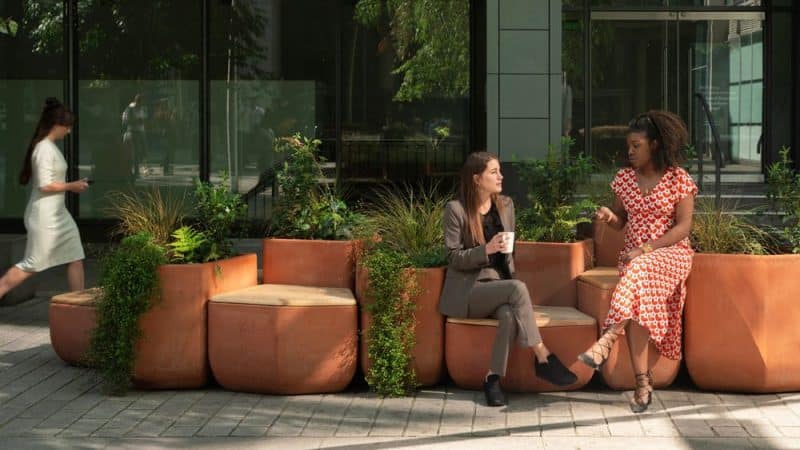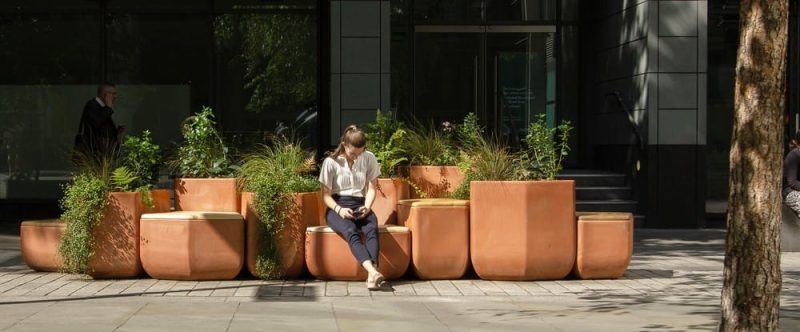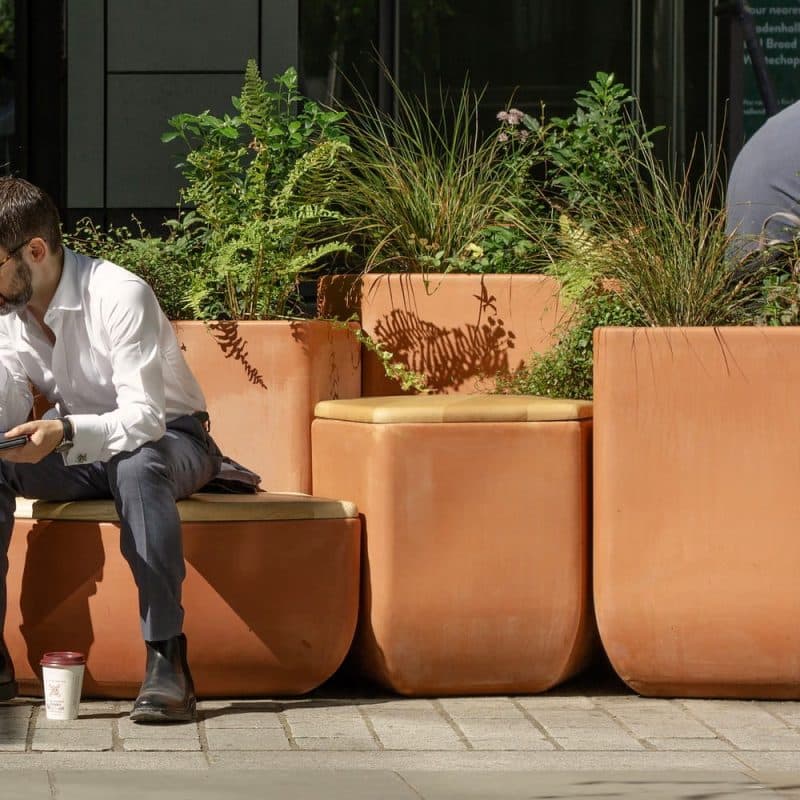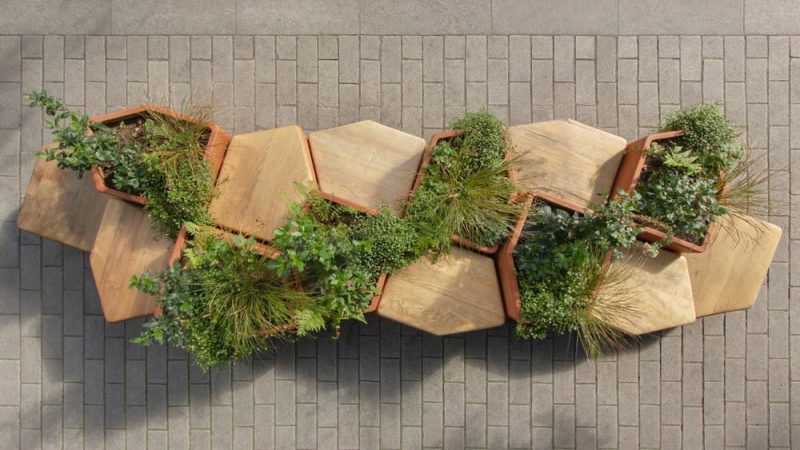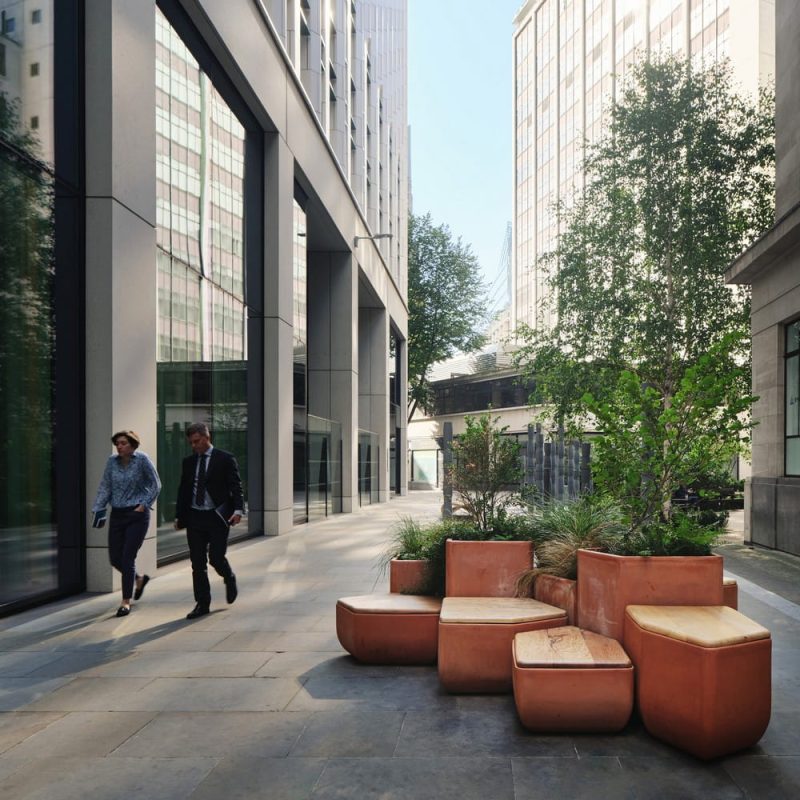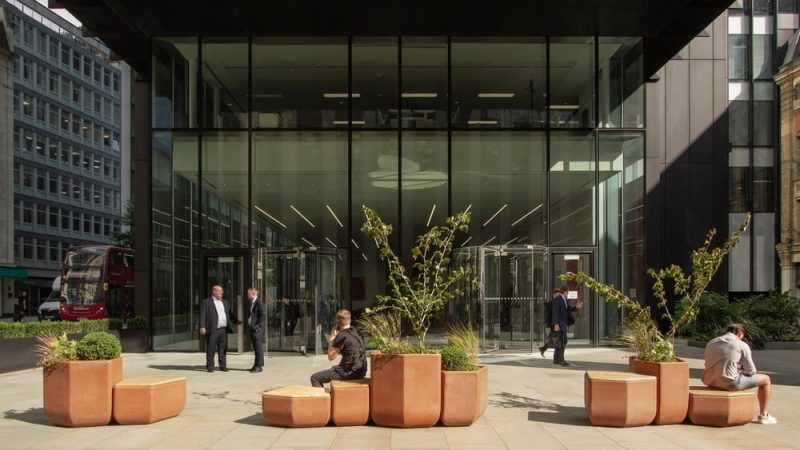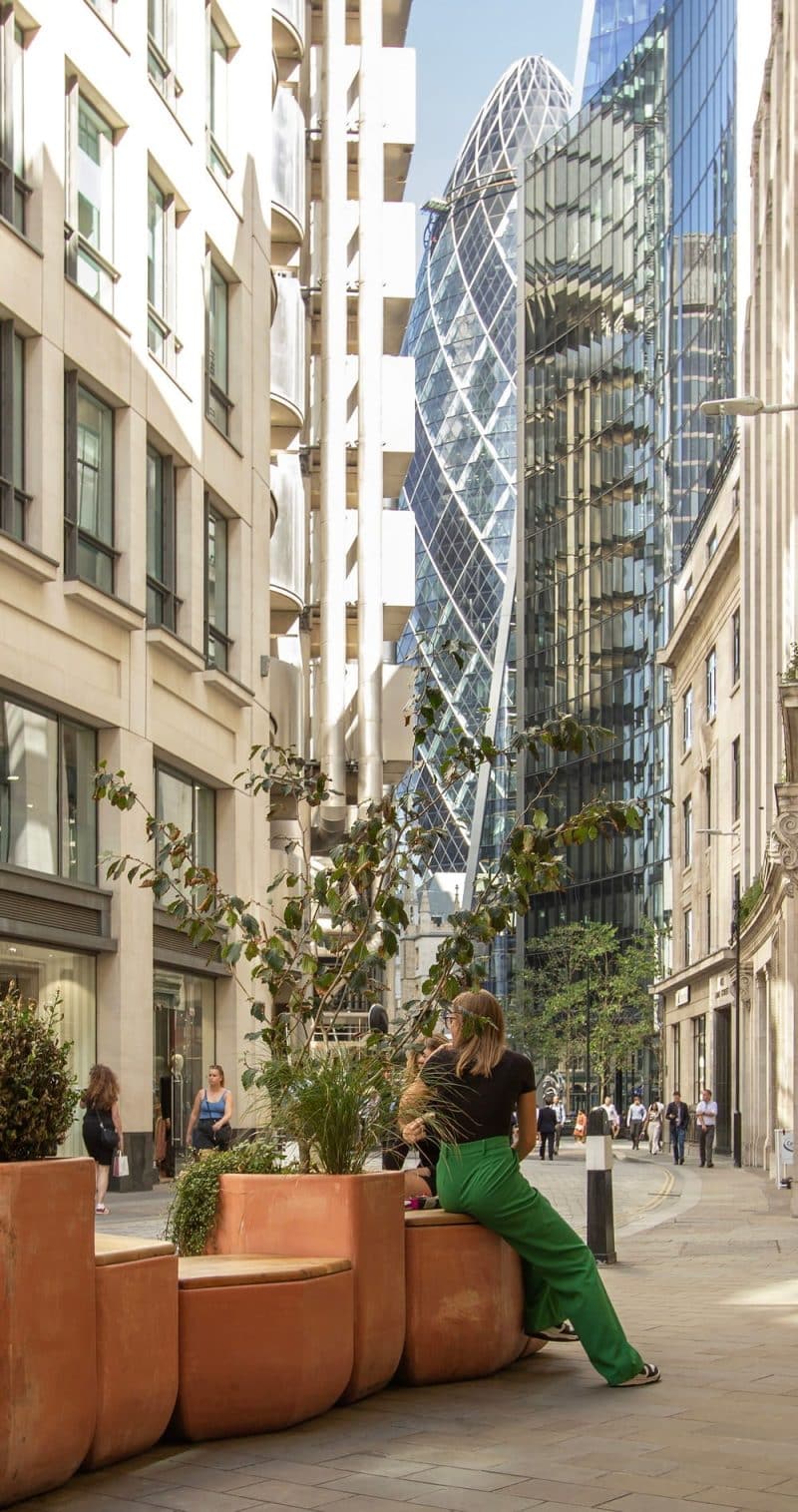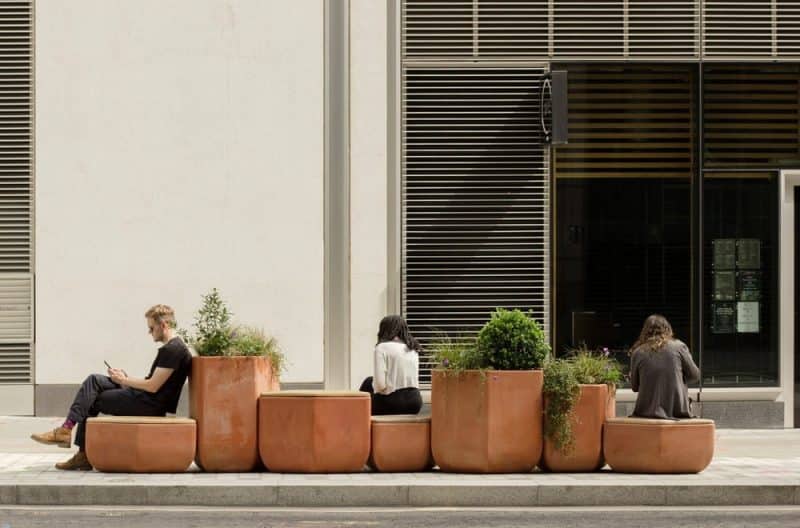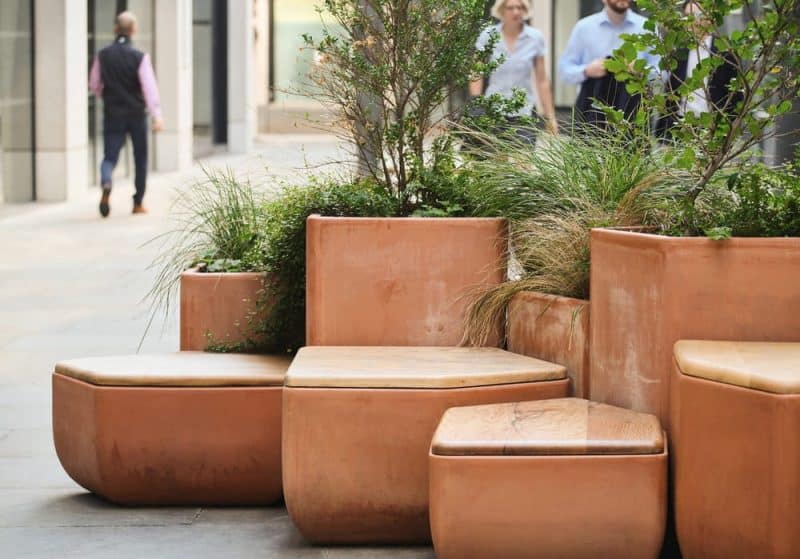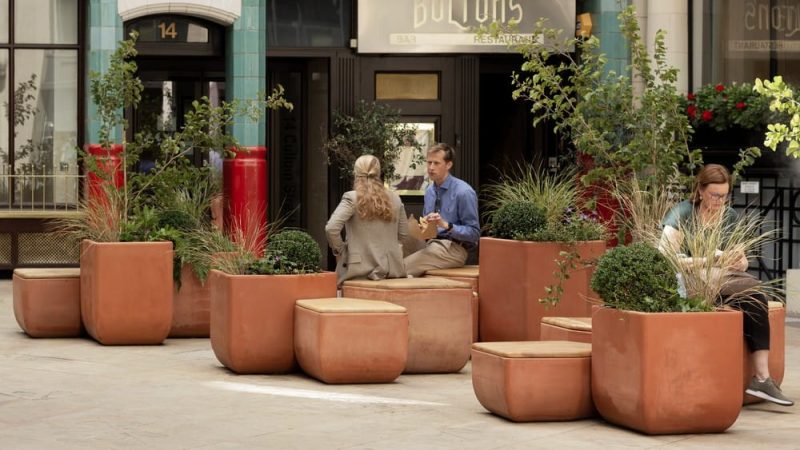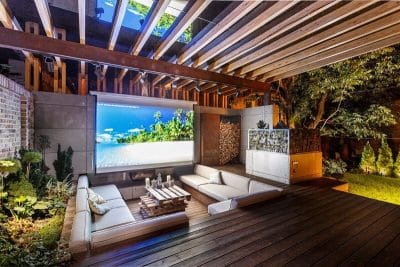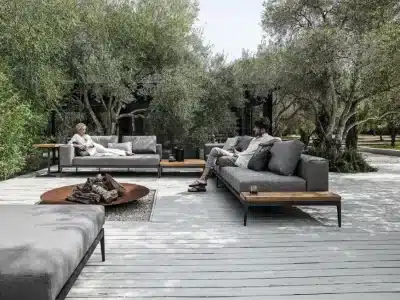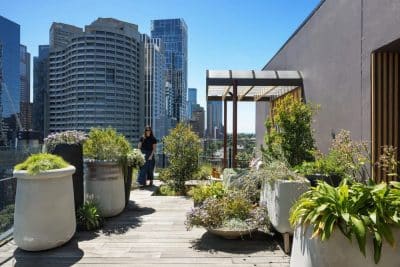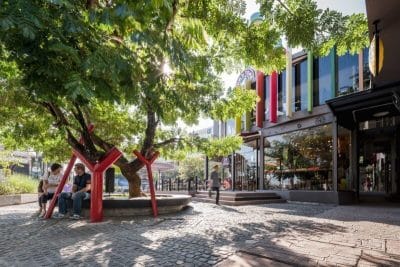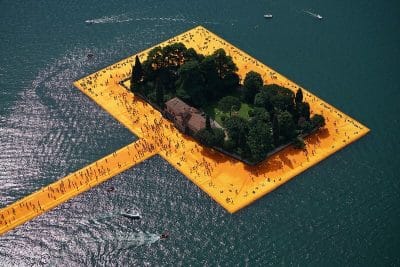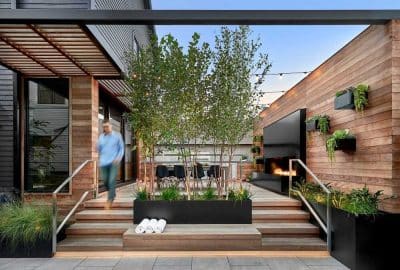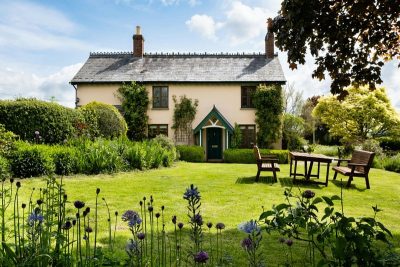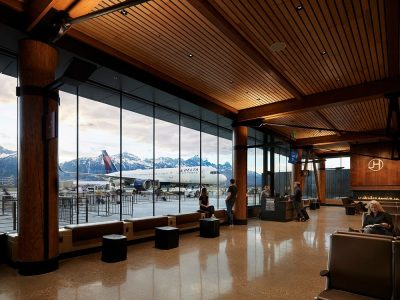
Project: City Clusters
Architecture: Butler Wiltshire
Lead Architects: Ed Butler, Daniel Wiltshire
Location: London, United Kingdom
Year: 2023
Photo Credits: Butler Wiltshire – Ed Butler, Simon Kennedy
Butler Wiltshire has recently introduced a series of seating and planter modules, known as City Clusters, for the City of London. Crafted from terracotta and repurposed timber, these installations create much-needed spaces for seating and greenery in the high-rise Eastern City area.
Inspiration and Design
The design of these sculptural, interlocking modules is inspired by the Coats of Arms of the historic City Livery Companies, which typically feature 5-sided shields. These symbols, deeply ingrained in the City’s heritage, are often seen on buildings, gateways, and street fixtures. By altering the classic shield motif into a tessellating tile geometry, Butler Wiltshire developed vessels of six different heights, using the same form for both seating and planters.
Materials and Craftsmanship
In contrast to the engineered glass and steel of the City towers, the materials selected for the City Clusters are natural, tactile, and handcrafted. The ceramic bases, reflecting the clay foundation of the City, feature a terracotta color reminiscent of Roman bricks and pottery discovered in the Bishopsgate, Fenchurch St, and Lime St areas. These bases were produced by Darwen Terracotta, a specialist in architectural ceramics from Blackburn.
The seating modules, available in three heights to cater to different ergonomic needs, are topped with timber crafted by Fallen & Felled from repurposed urban trees in Greater London. This timber, sourced from species like oak, elm, yew, hornbeam, and sycamore, adds unique grains, colors, and textures to each cluster, enhancing their natural beauty.
Versatile Configurations
The asymmetric design and varying module heights create a dynamic, organic feel that avoids the monotony of repetition. The modules can be configured in numerous ways to fit different site sizes and conditions. Depending on their arrangement, the clusters can emphasize an orthogonal pattern or create softer, more fluid edges.
Functional and Aesthetic Integration
The three shorter modules serve as seating, while the three taller ones function as planters filled with sculptural and seasonal plants. This thoughtful combination of seating and greenery not only beautifies the urban environment but also reflects the City’s architectural heritage. The City Clusters offer a harmonious blend of functionality and aesthetics, enriching the urban landscape with comfortable seating and vibrant greenery.

